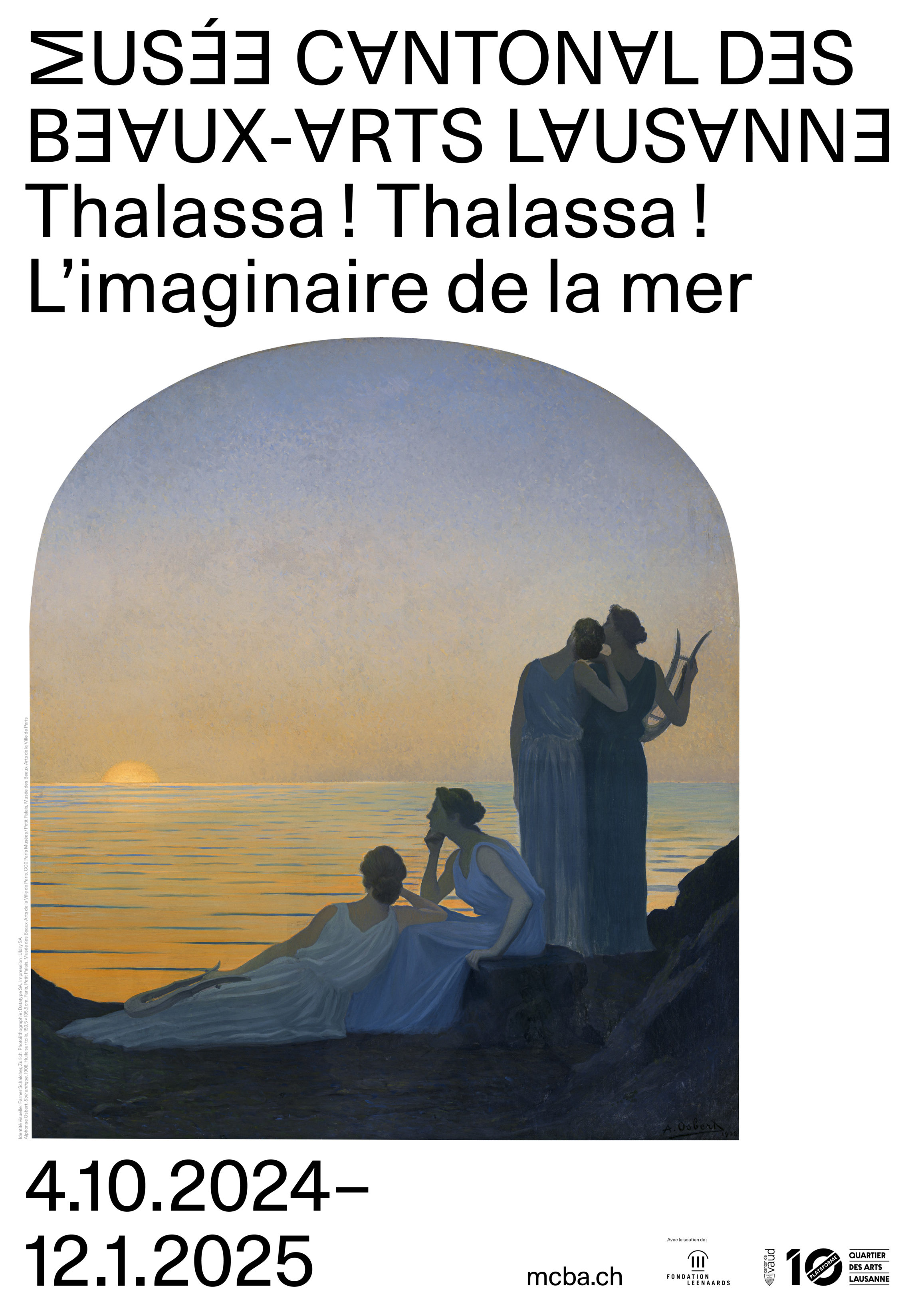
Thalassa! Thalassa!
Imagery of the Sea
This show challenges us with a singular landscape, the sea, in works of art from the 19th century to the present. What role have artists played in fashioning its imagery? How do they express our desire to preserve its mysteries and beauties?
At the point where art history and the history of culture meet, Thalassa! Thalassa! Imagery of the Sea probes our relationship to the sea as that connection has taken shape in figurative art from the 19th century down to the present. In light of humans’ reworking and reordering of the shoreline, in keeping with the development of navigation and the advances made in geology and zoology, how we see the Ocean and its denizens both real and imaginary has indeed experienced an endless sea change.
Many technical inventions have accompanied these developments and advances, including aquarium, diving bell, the old-style hard-hat diving suit, periscope, undersea vehicle, and on and on. All of these devices–to which we would have to add the microscope, photography, and film–have helped to redefine the visible and the invisible, making our point of view something much more fluid, erasing our bearings, our landmarks, and raising unknown creatures from the deep. How have artists incorporated or anticipated the series of upheavals that have redrawn the mental grid humans use to comprehend an immense watery territory that extends from beaches to the ocean depths?
The layout of the show offers visitors a narrative. They will discover how a collective desire to preserve the mystery and beauty of the sea is anchored in an emotional and aesthetic relationship to the natural world, one that has taken shape in a story and a history that have been told in images. On the museum’s first floor and continuing on the second, three themes are developed in turn, the shore, the deep, and the abyss.
Taking shape in the 19th century, these themes, however much dramatized, reappropriated, even deconstructed, remain no less identifiable in contemporary art. Today when we are increasingly aware of the role we humans play in degrading ecosystems, when maritime borders are causing a number of conflicts, they form a theatre of questions that are proving absolutely relevant to our day and age.
This event has been made possible by many generous loans from private collections and public institutions, in Europe (Ajaccio’s Palais Fesch; Lyon’s Musée des Beaux-Arts; Paris’s Musée d’Orsay, Petit Palais, and Musée de la Vie romantique; Vienna’s Naturhistorisches Museum Wien; and Baden-Baden’s Museum Frieder Burda), and in Switzerland (Geneva’s Ariana and Musée d’art et d’histoire, Lausanne’s Musée cantonal vaudois de zoologie, Musée historique, and Collection de l’Art brut; the Kunst Museum Winterthur; and Kunstmuseum St. Gallen).
Curators of the exhibition:
Catherine Lepdor, chief curator, MCBA, and Danielle Chaperon, professor of French literature, University of Lausanne, with the help of Camille de Alencastro, research assistant, MCBA
Featuring works by
The show features works by a wealth of artists, including
Louis Ducros
Eugen von Ransonnet-Villez
Arnold Böcklin
François Bocion
Ary Renan
Bolesław Biegas
Edward Burne-Jones
Alphonse Osbert
Jean-Francis Auburtin
Alexandre Séon
Albert Marquet
René-Xavier Prinet
Félix Vallotton
Maurice Pillard-Verneuil
Jean Painlevé
Pierre Boucher
Germaine Martin
Man Ray
Max Ernst
Pascal-Désir Maisonneuve
Marcel Broodthaers
Ad van Denderen
Lubaina Himid
Caroline Bachmann and Stefan Banz
François Burland
Miriam Cahn
Sandrine Pelletier
Margaret et Christine Wertheim
Yael Bartana
Publication
Exclusive interview
Margaret et Christine Wertheim
In this interview with the MCBA, Margaret and Christine Wertheim, co-designers of the ‘Crochet Coral Reef’, describe the project, discuss the interpretations behind it and emphasise its collective and feminist dimension.
Playlist
A selection of music related to the exhibition theme
Classical, pop or traditional music, unmissable or rarities? The “Imagery of the Sea” inspires the music of yesterday and today as much as it nourishes the fine arts.
> To listen to the entire playlist: connect to Spotify via an existing account, or by creating a free personal account.
Partner
The exhibition Thalassa! Thalassa! The Imagery of the Sea is supported by the Leenaards Foundation, a partner in the Resonances project, which connects the three museums through thematic commissions to regional artists. As part of this, the MCBA presents the installation The Drowned World by Lausanne-based artist Sandrine Pelletier.

